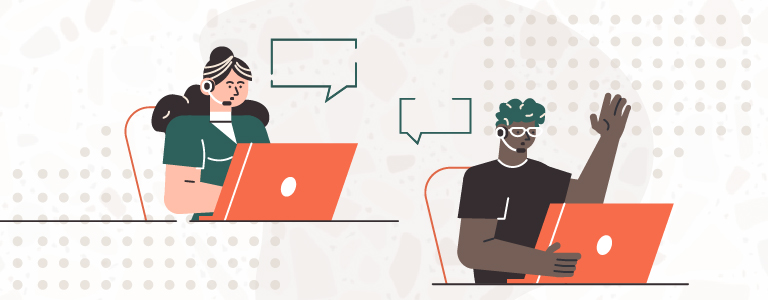‘Warmlines’: A Place to Call for Connection and Support

In times of personal crisis, calling a mental health hotline can be useful. But what if you aren’t necessarily experiencing a crisis? What if you’re trying to get through a tough day at work that has you feeling down or a rough patch in a relationship that you can’t quite wrap your mind around? For people who need someone to talk to, a “warmline” can help.
What Is a Warmline?
Warmlines are similar to hotlines in that they are free, peer-run phone lines that connect callers to clinically supervised and trained mental health advocates, including social workers, who provide emotional support. The difference is that warmlines take an early intervention approach to alleviating struggle, while hotlines are more often used to manage crises that already exist.
For people who struggle to find support, especially during difficult transitions, these phone lines allow them to open up about their experiences and create meaningful connections with the person on the other end.
In a study that evaluated the services provided by a warmline based in Milwaukee (PDF, 501 KB), researchers found that callers using warmlines were most often reaching out for:
- Supportive listening.
- Problem solving.
- Mental health resources.
Operators will typically assess the caller’s situation and mood before evaluating how to help. The wide range of topics operators and callers may discuss include:
- Loneliness and isolation.
- Financial issues and stress.
- Relationships.
- Conflicts with friends or roommates.
- Work-related problems.
- Mental illness.
- Substance use.
- Death.
- Trauma.
However, these conversations aren’t always negative in nature. Some callers may reach out simply to talk about their daily life or to celebrate an achievement or milestone. In these instances, connection may be what they are looking for.
What Effects Do Warmlines Have on Communities?
Warmlines have a variety of positive effects. A 2011 NIH study on the impact of warmlines found that these resources help people manage loneliness, mental illness symptoms, and recovery. Because they are open throughout the evening, they can also improve access to mental health services for people who may not be able to seek counseling or therapy during work hours and can help close mental health care gaps for rural and urban communities. A separate presentation for the Substance Abuse and Mental Health Services Administration (PDF, 4.7 MB) said warmlines reduce the number of calls to crisis lines, reduce the number of psychiatric hospitalizations and provide risk management options for local law enforcement.
“Warmlines help people who think, ‘I don’t know why I’m not feeling great, or who to turn to, or where to get care, and I don’t know for sure if I even need care,’” said Sarah Flinspach, a project coordinator for the National Council for Behavioral Health in a Kaiser Health News article on warmlines.
Where To Find the Phone Number for a Warmline
Most states have an organization that offers a warmline and some states have warmlines dedicated to parents, seniors, teens and childcare providers.
Mental Health America ranked states based on the prevalence of mental illness and access to care. Here are warmlines for the 9 states that ranked the worst:
- Kansas: Compassionate Ear Warmline 1-886-927-6327
- Montana: Montana Warmline – 877-688-3377
- Oregon: Community Counseling Solutions – 1-800-698-2392
- Nevada: National Institute on Mental Illness, Western Nevada – 775-241-4212
- South Carolina: South Carolina Crisis Line – 864-271-8888
- Utah: University of Utah Health Care – 801-587-1055
- Washington: WA Warmline – 1-866-424-4747
- Wyoming: Wyoming Behavioral Institute – 800-457-9312
If you don’t see your state on this list, visit the National HelpLine Warmline Directory (PDF 125 KB) from the National Alliance on Mental Illness for a full list of warmlines.

